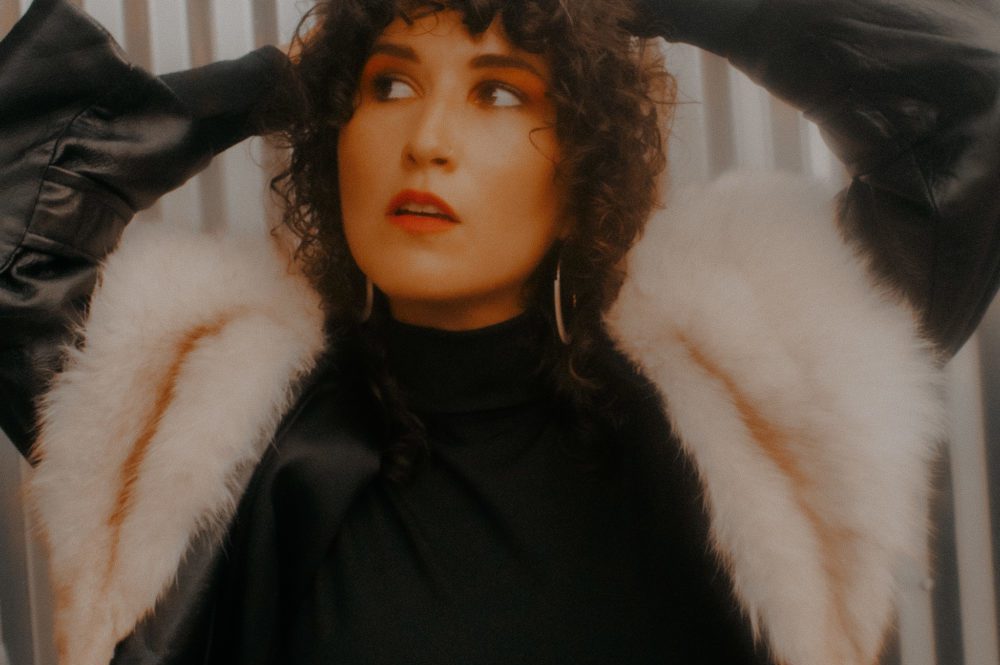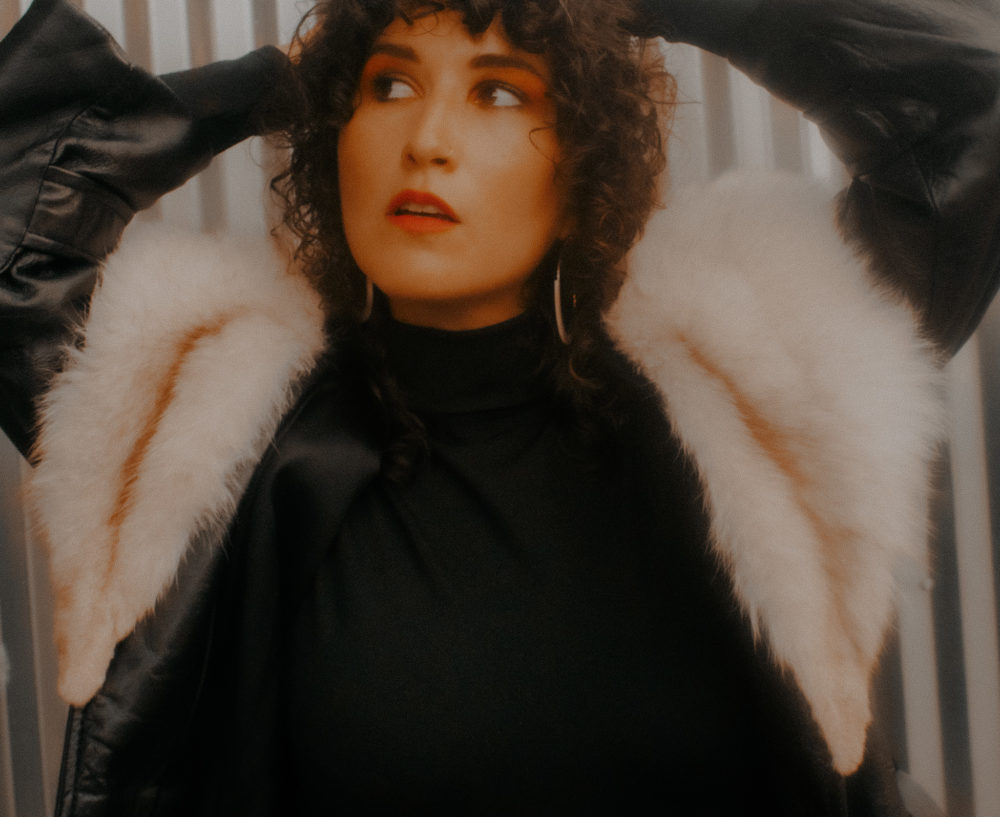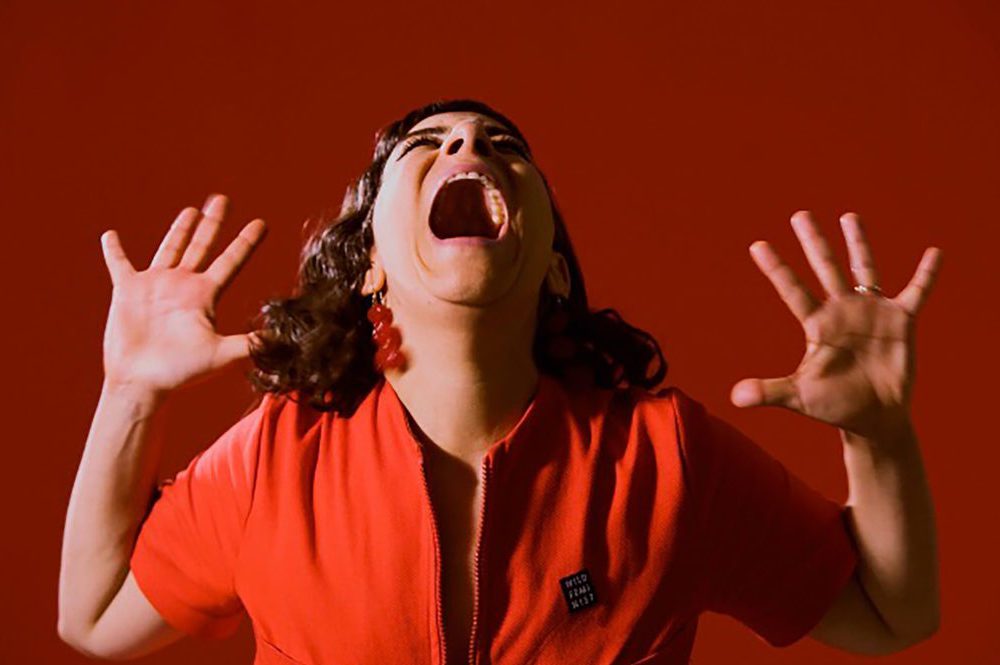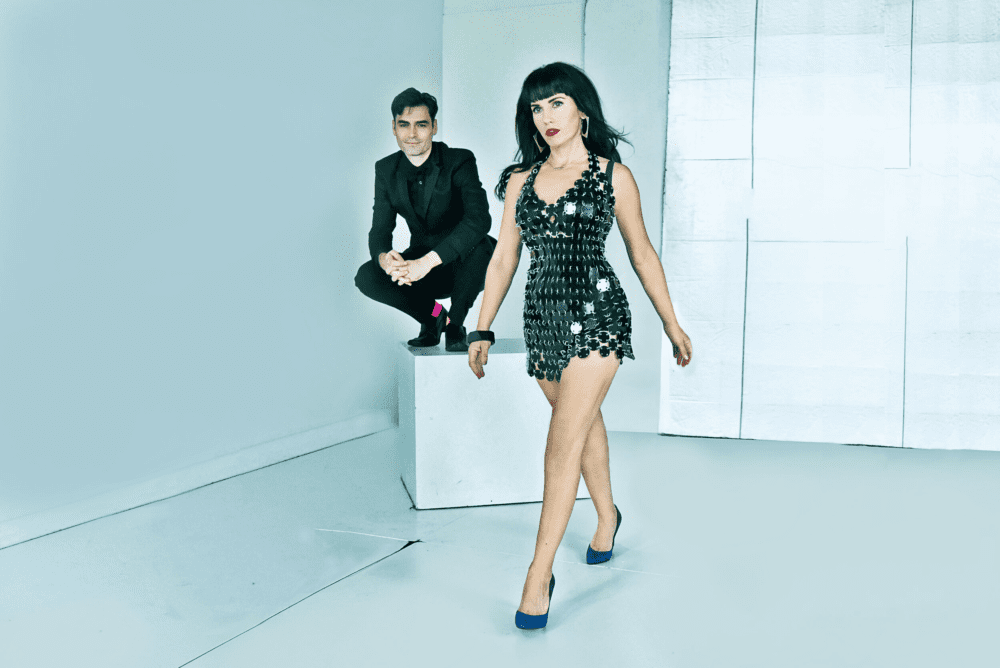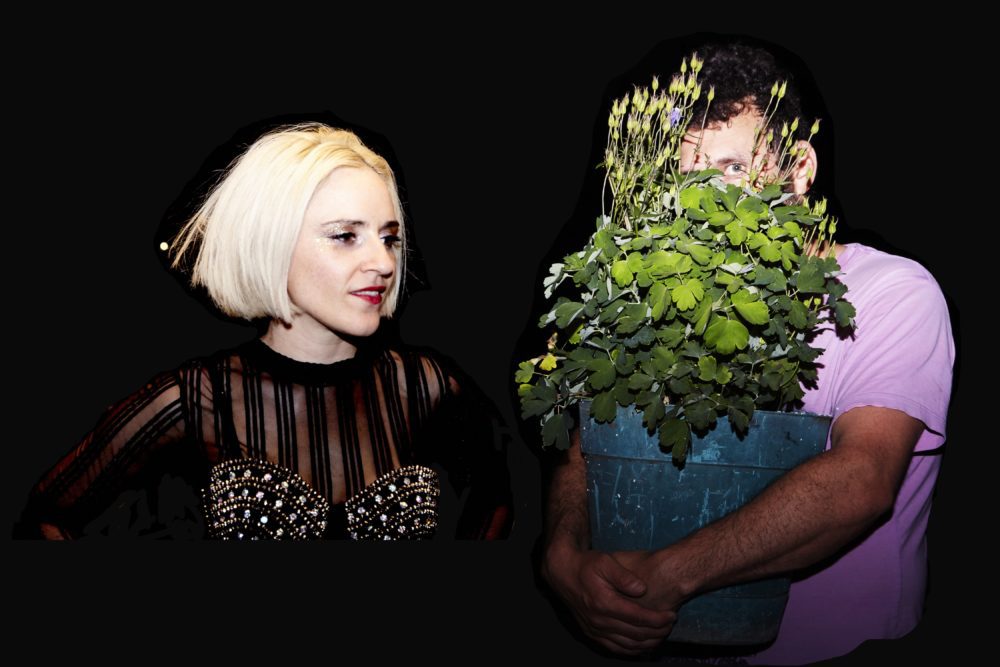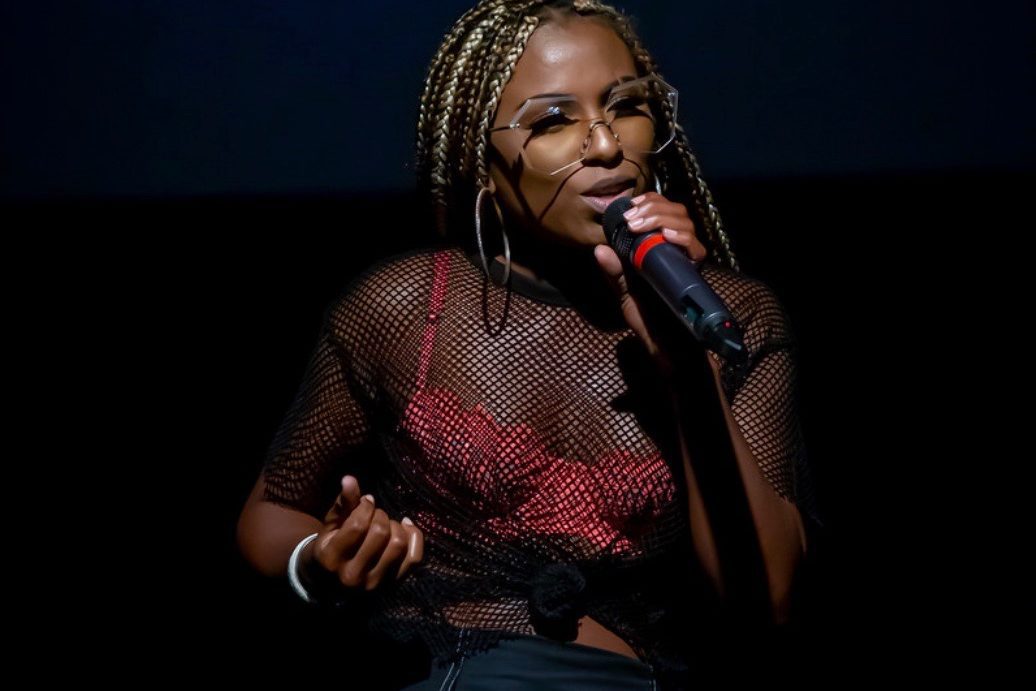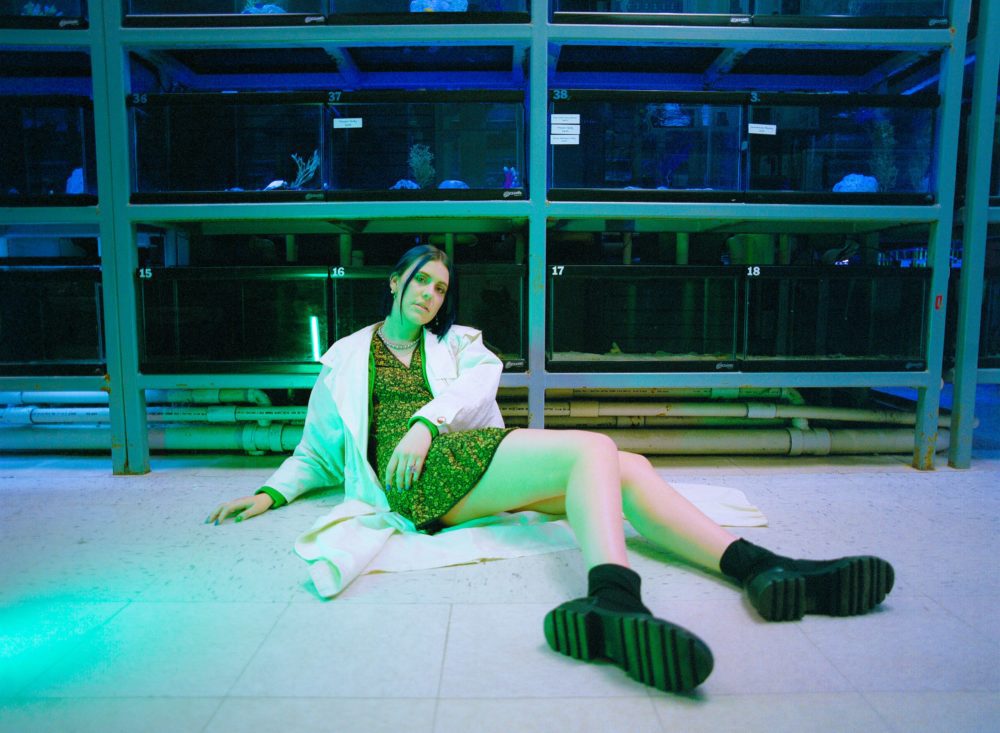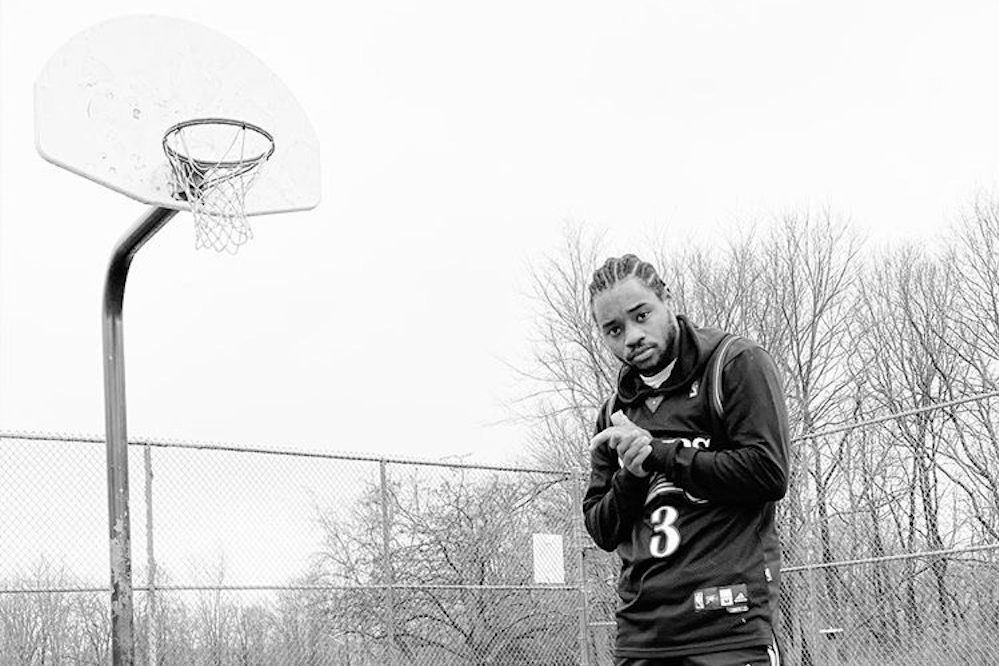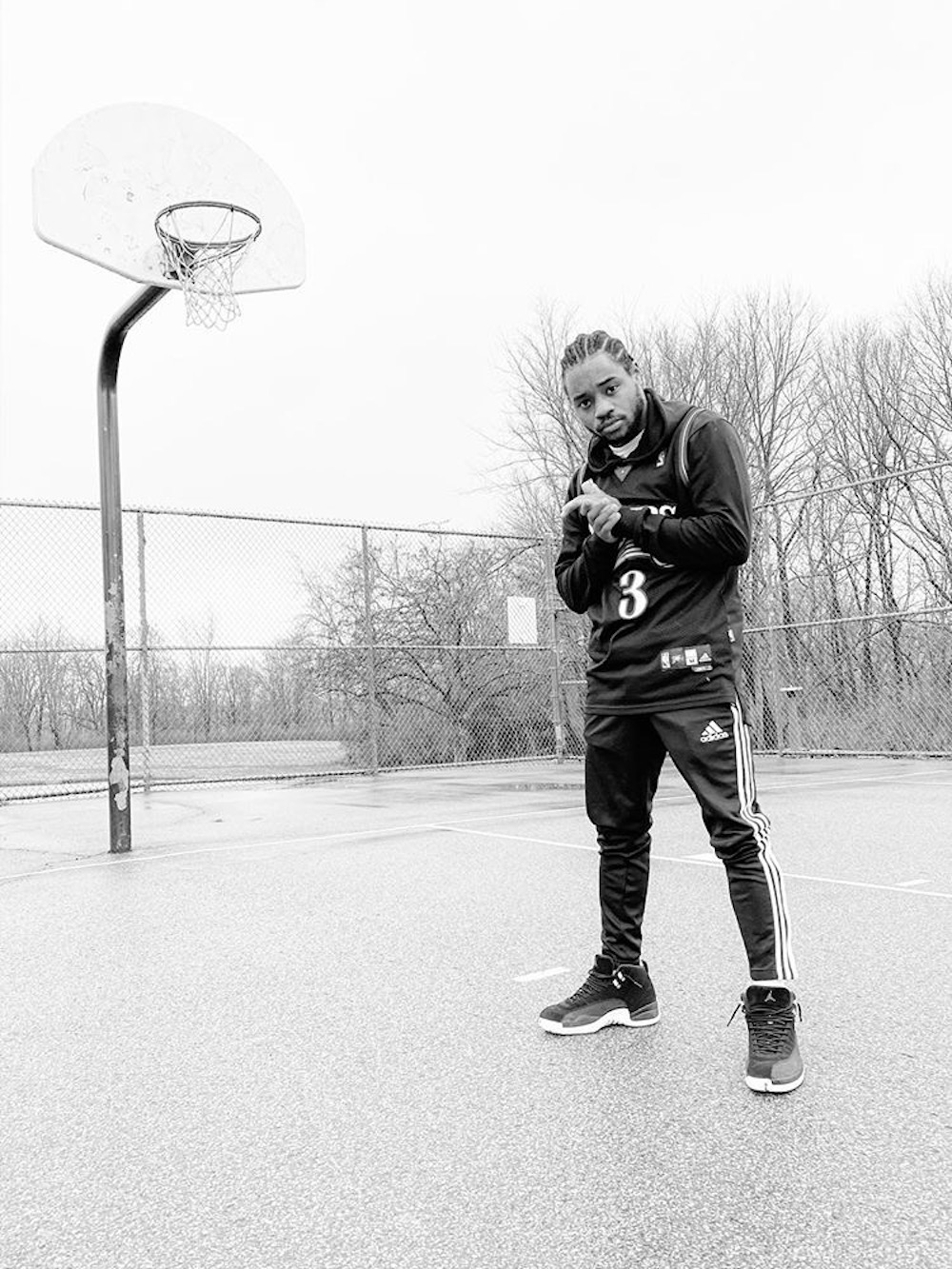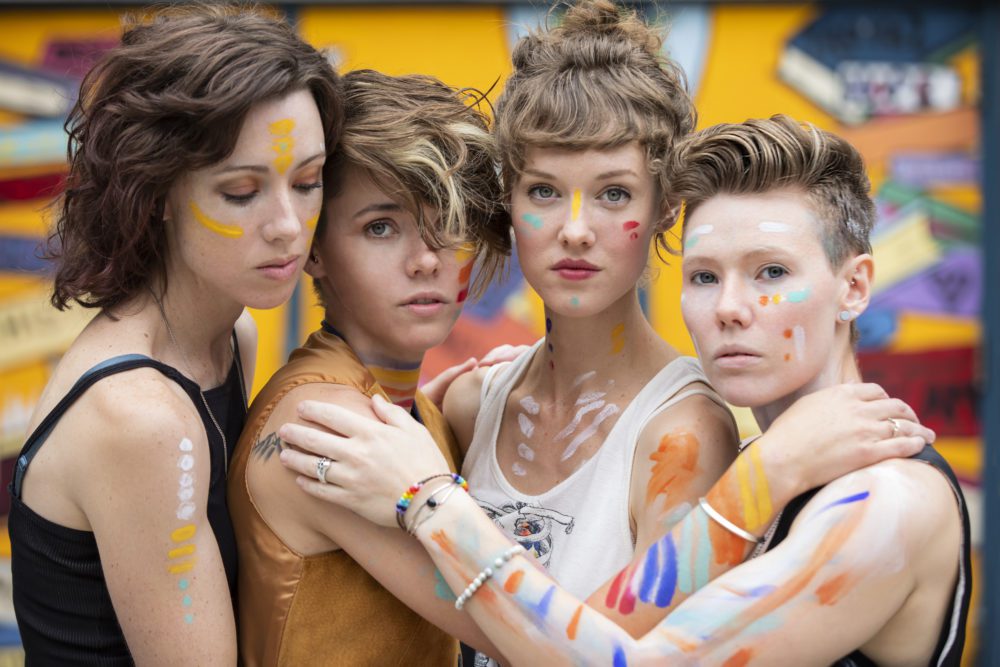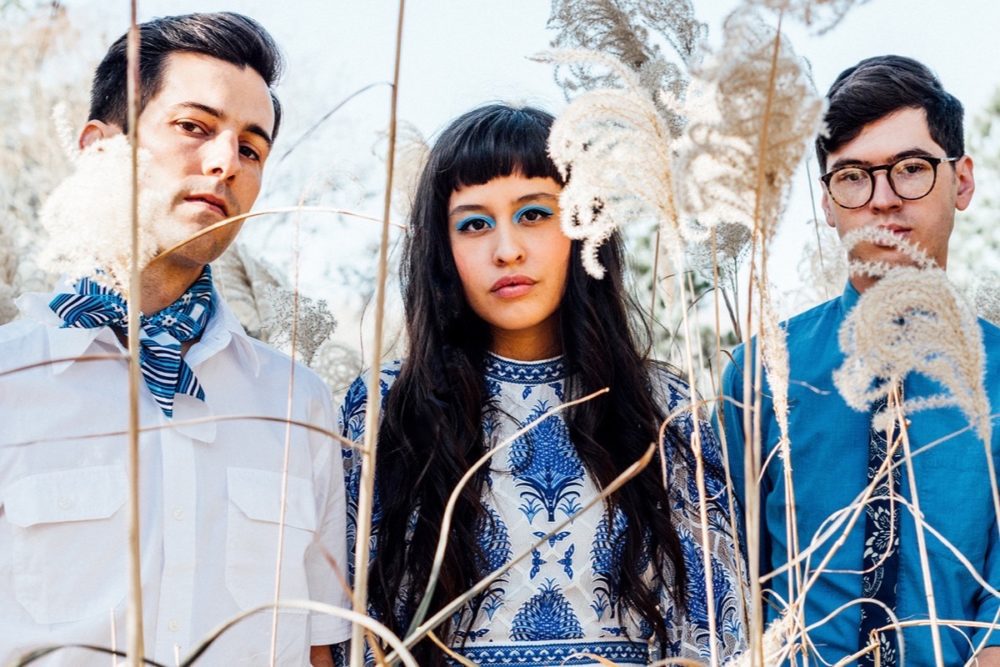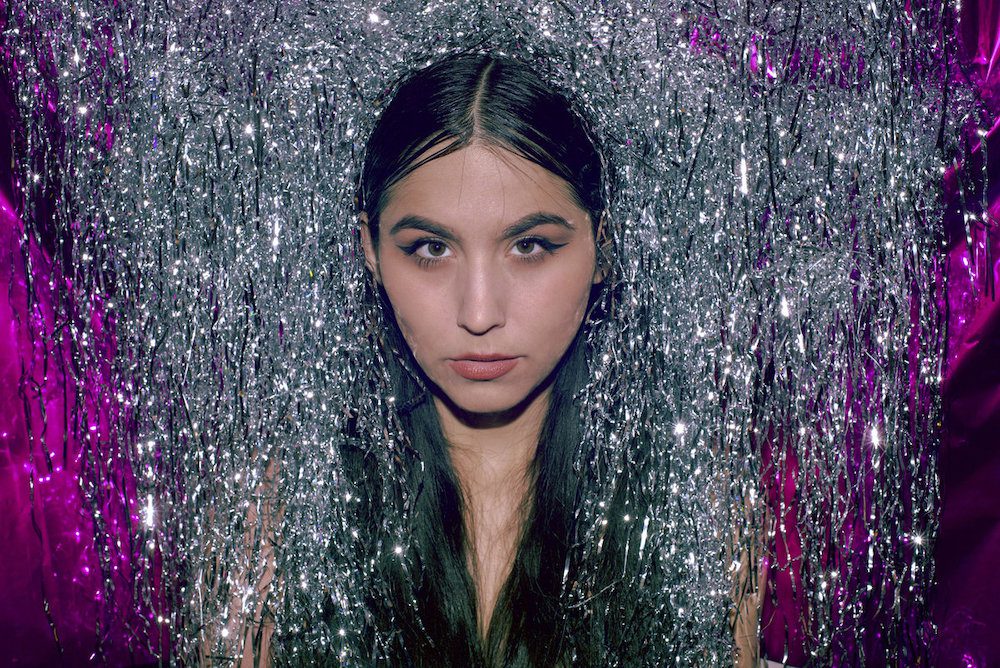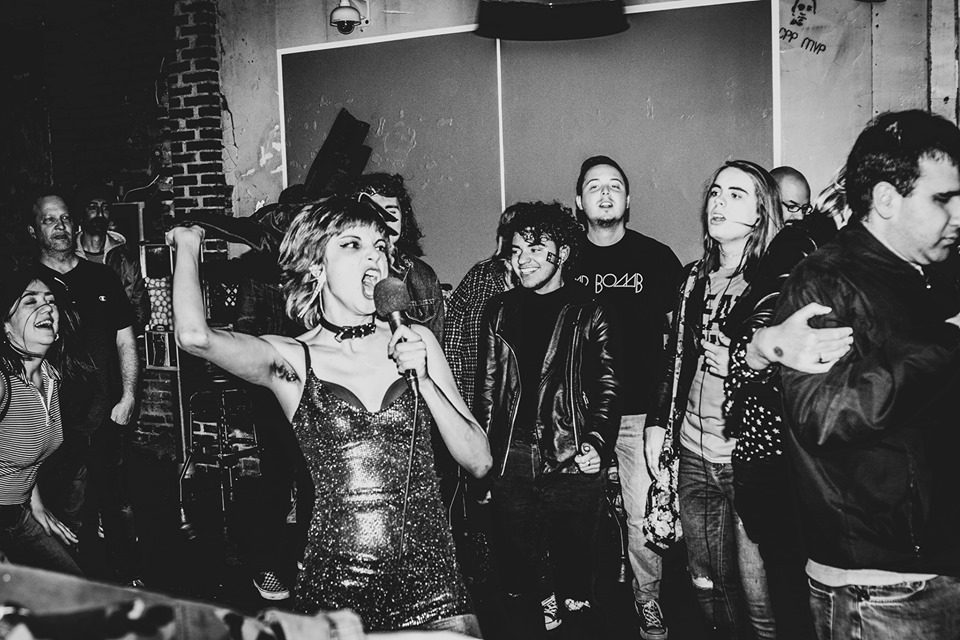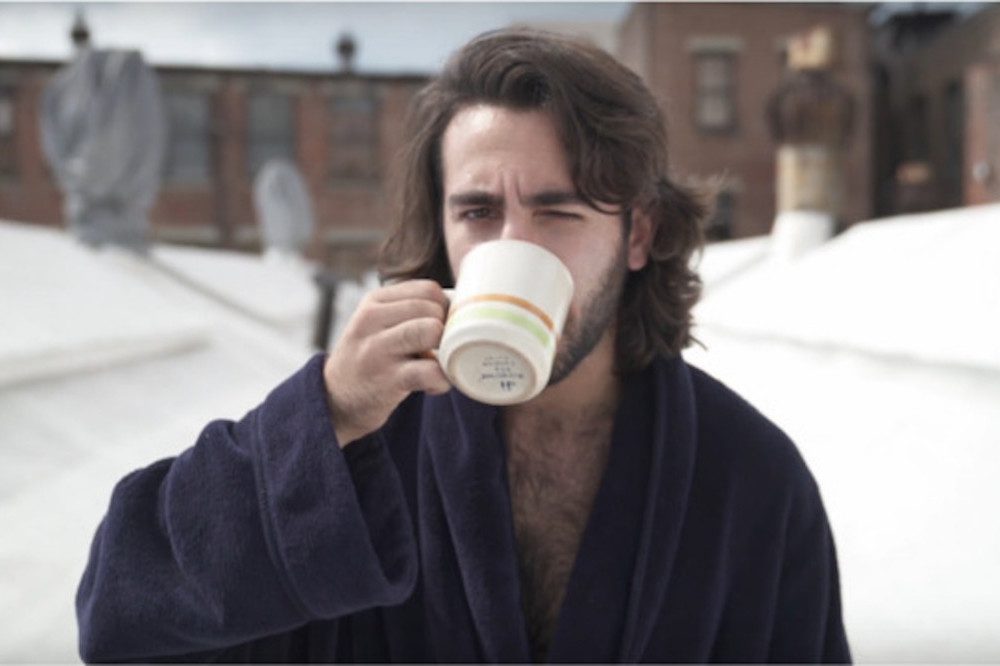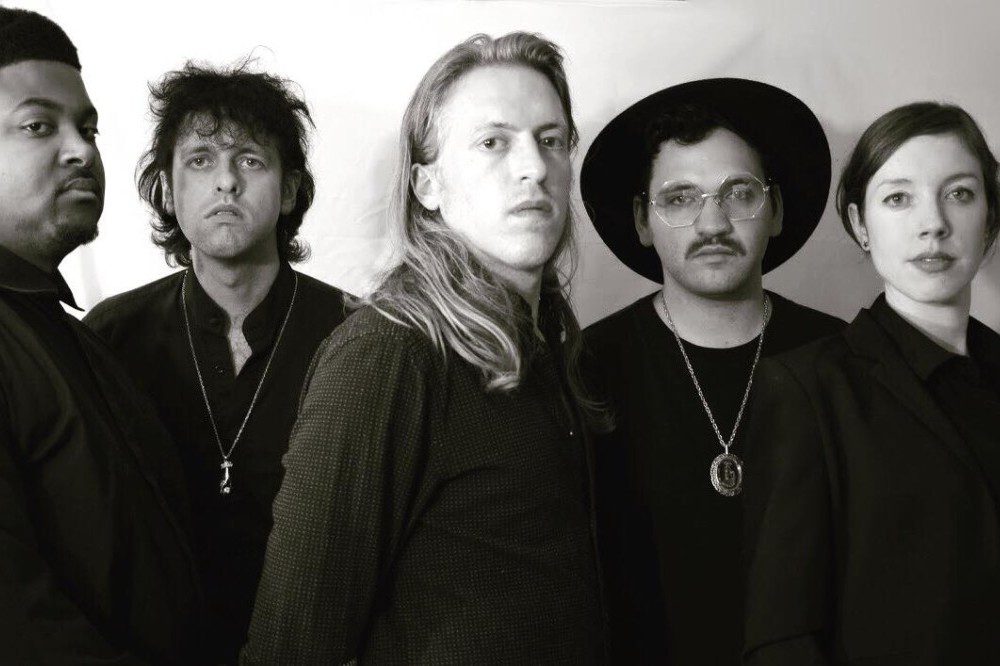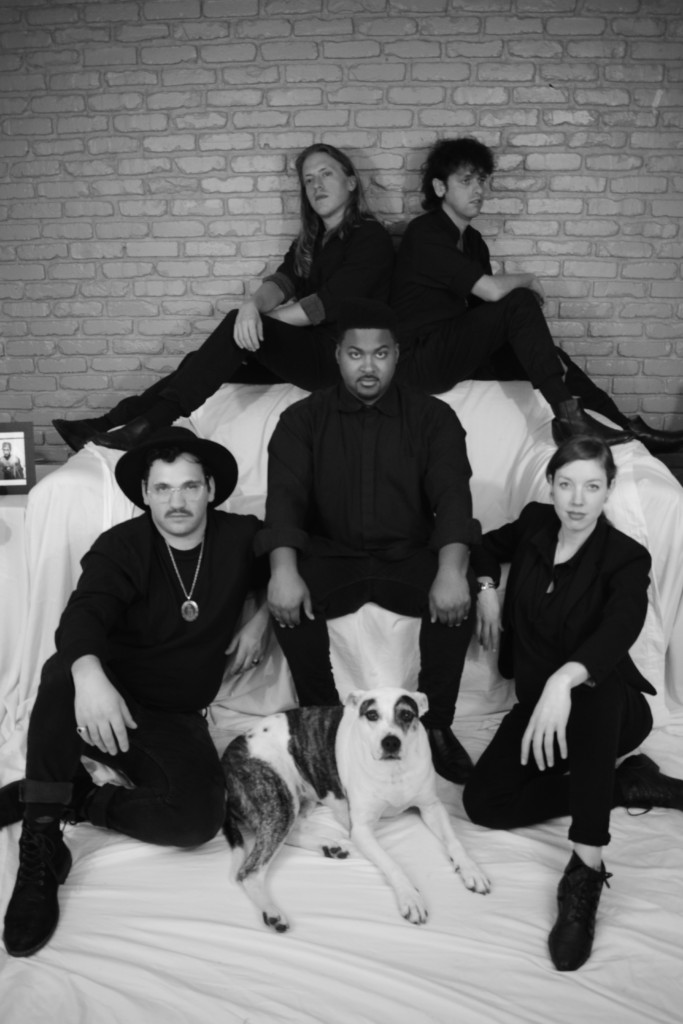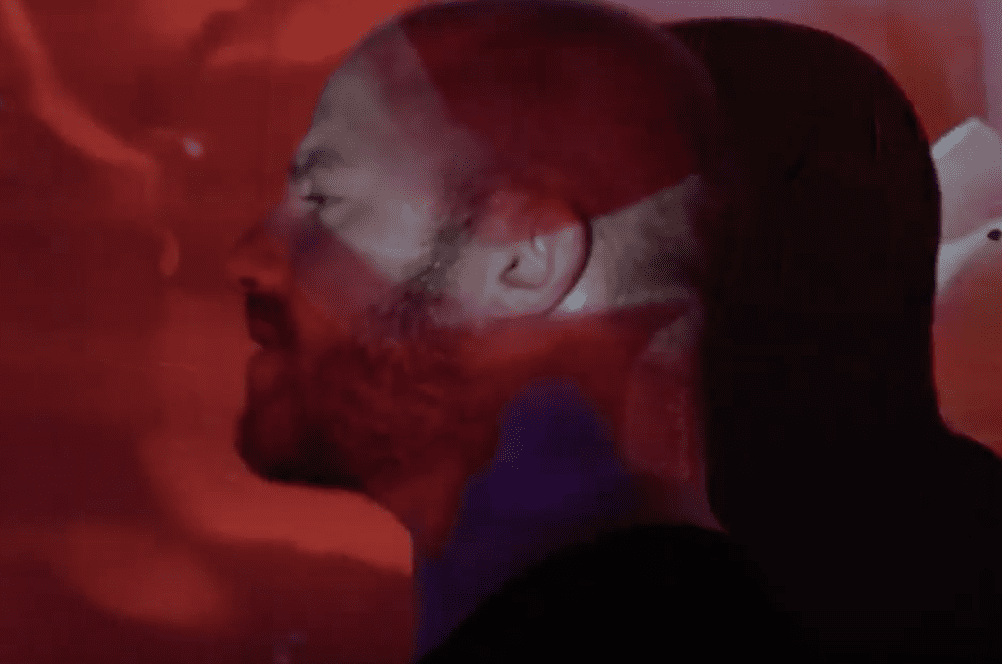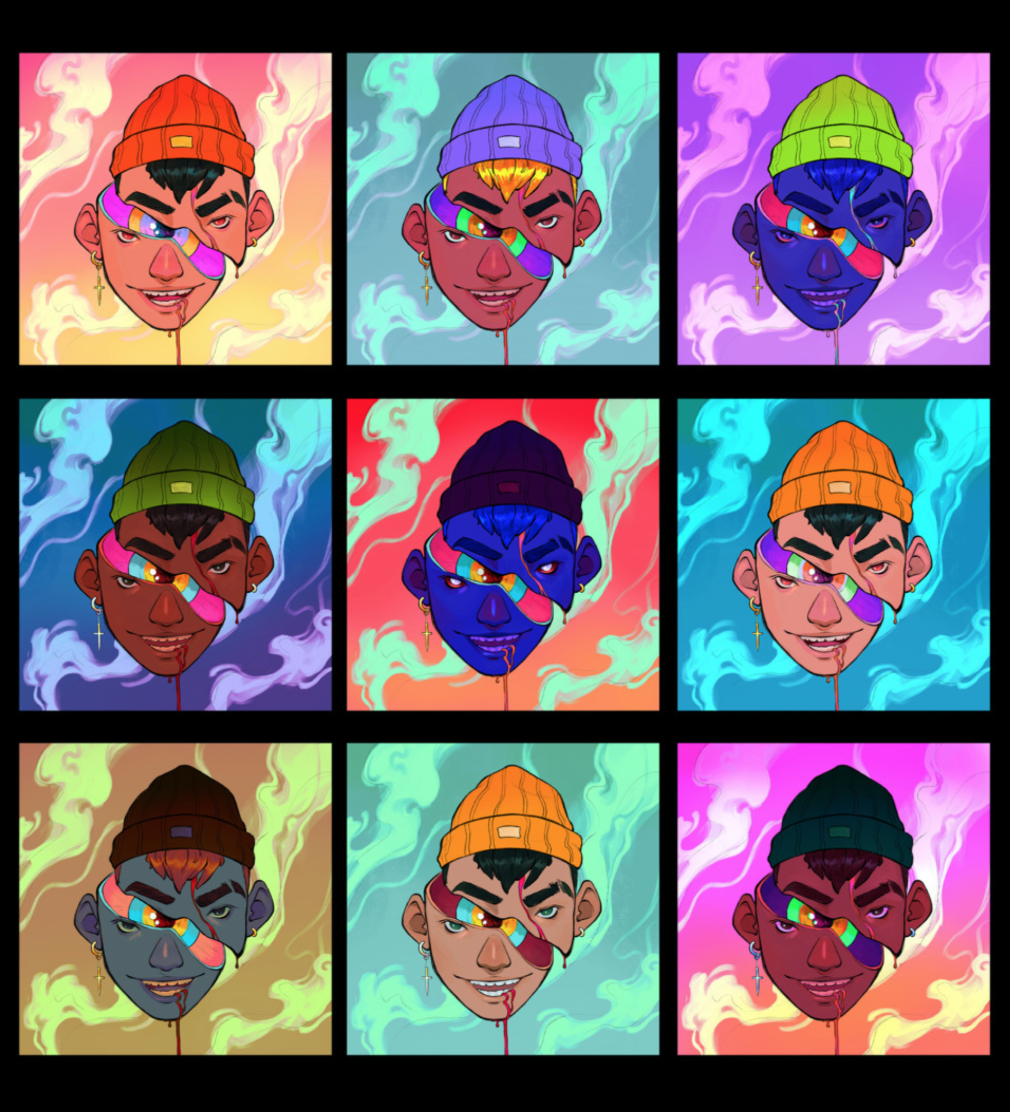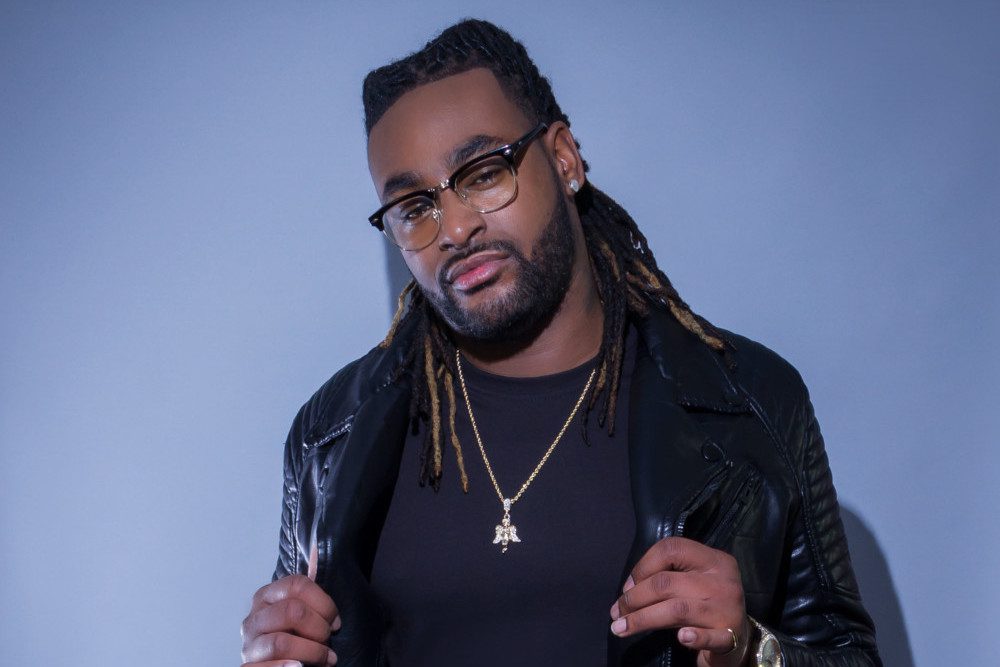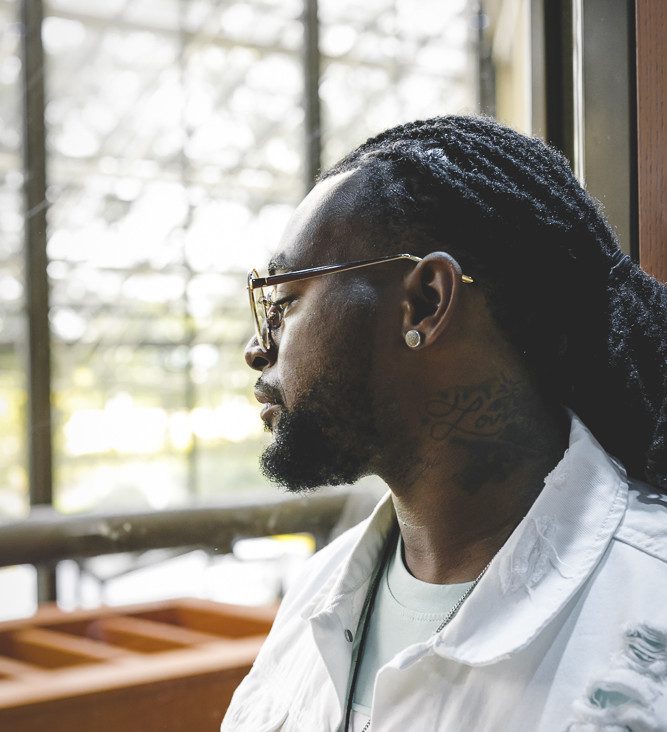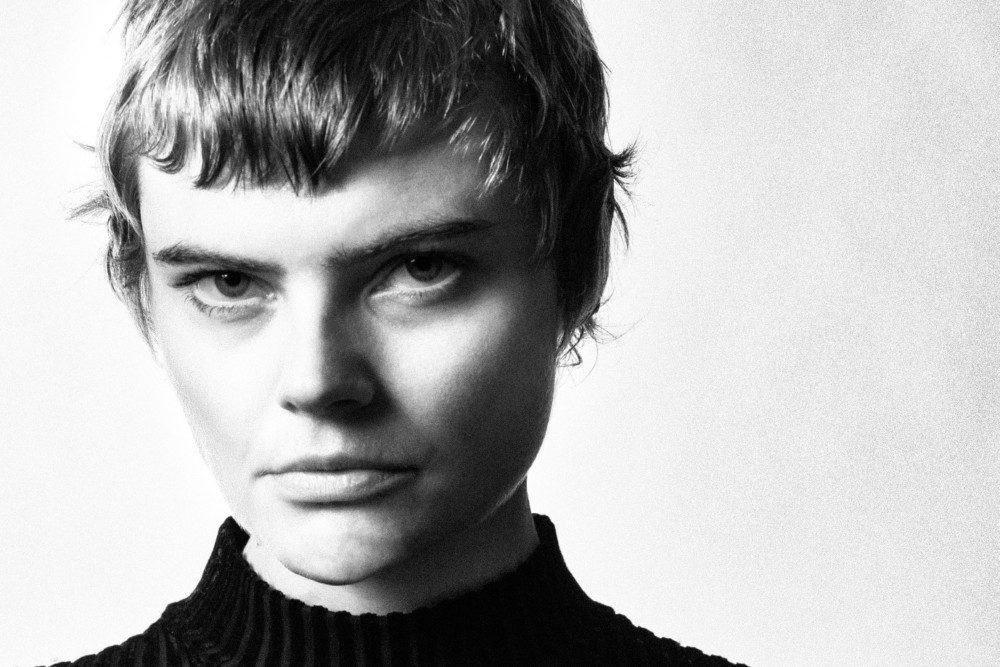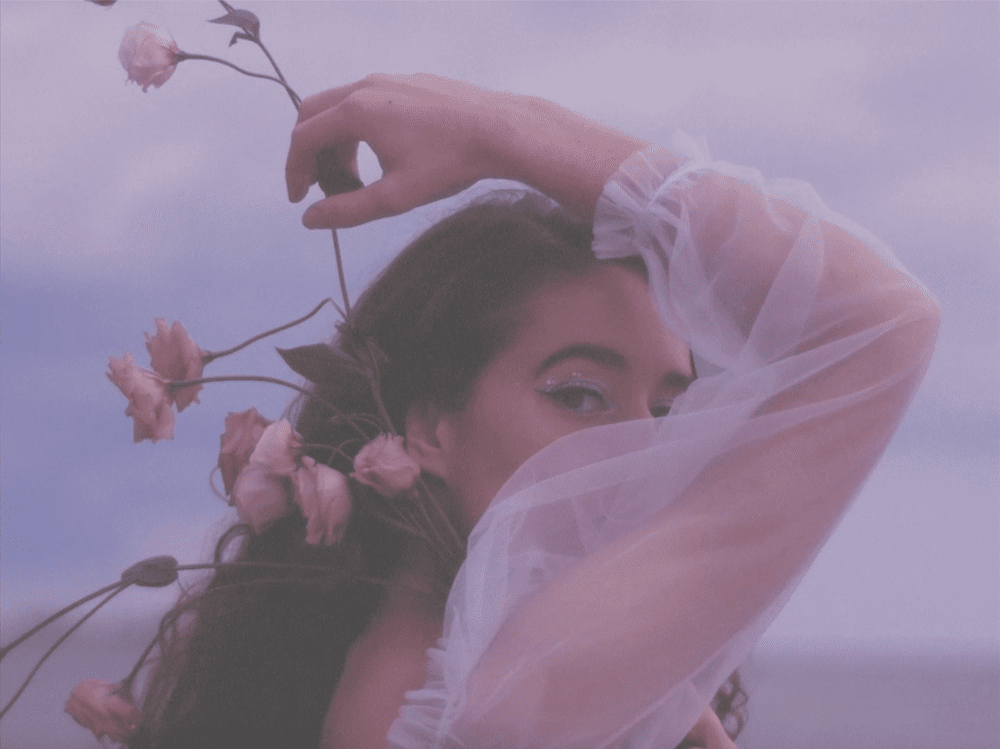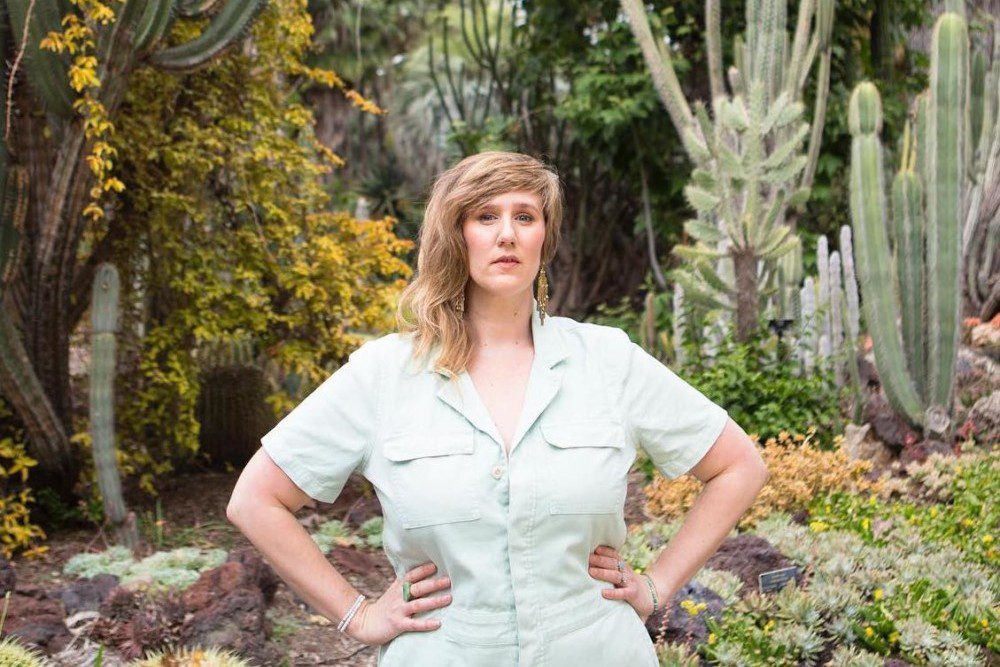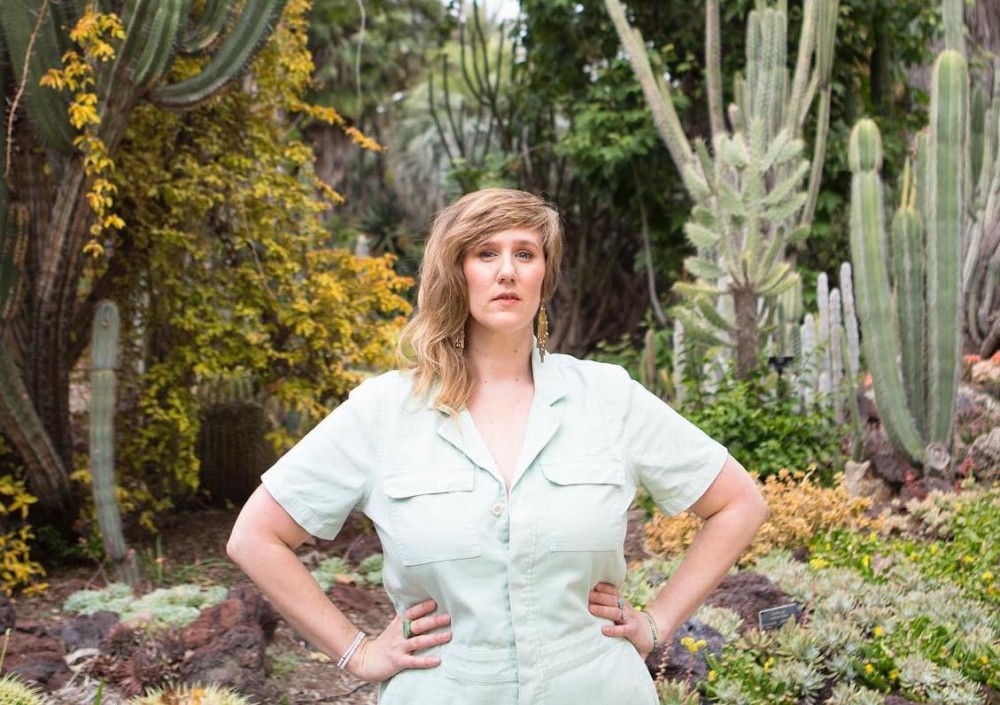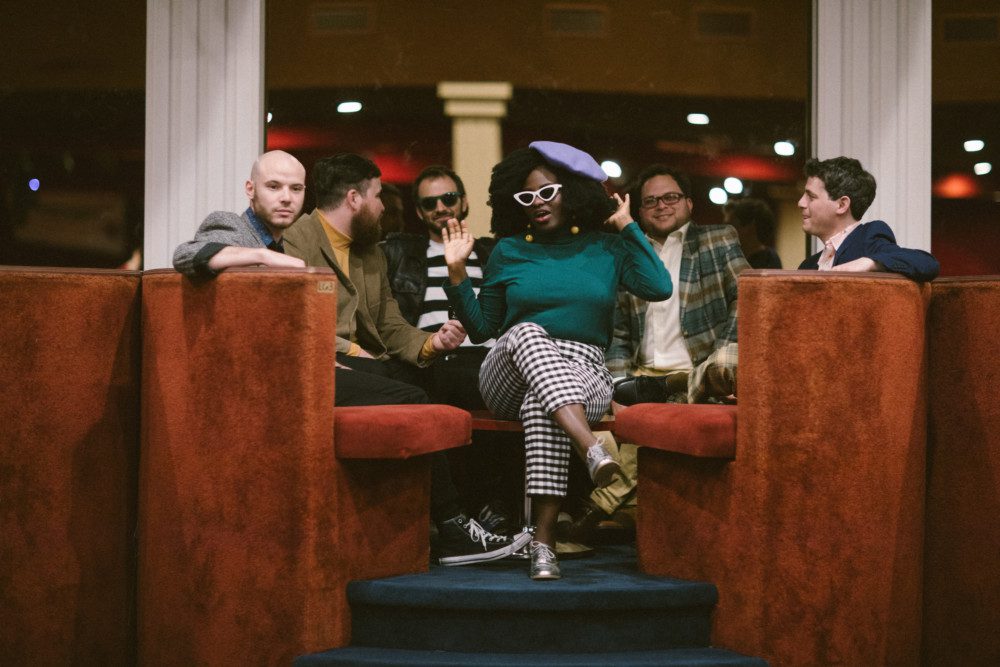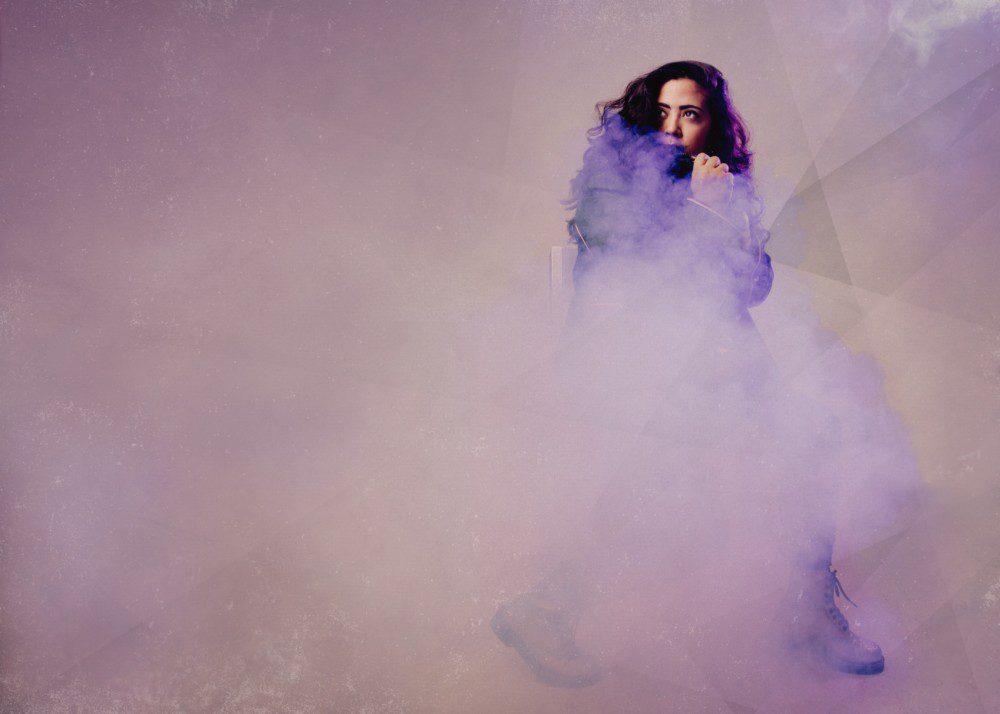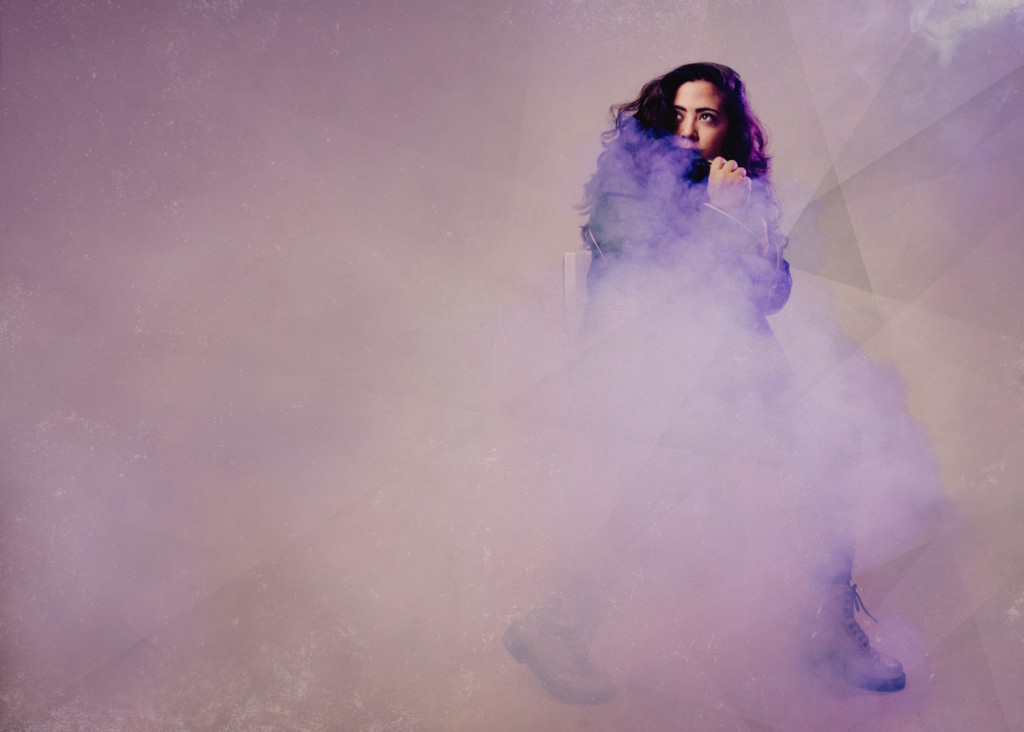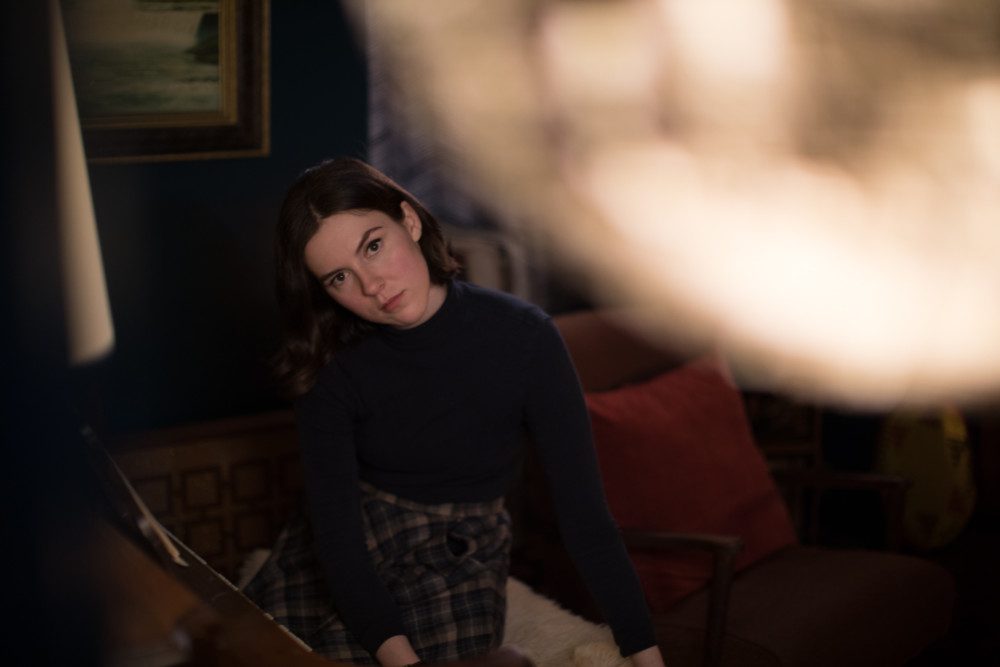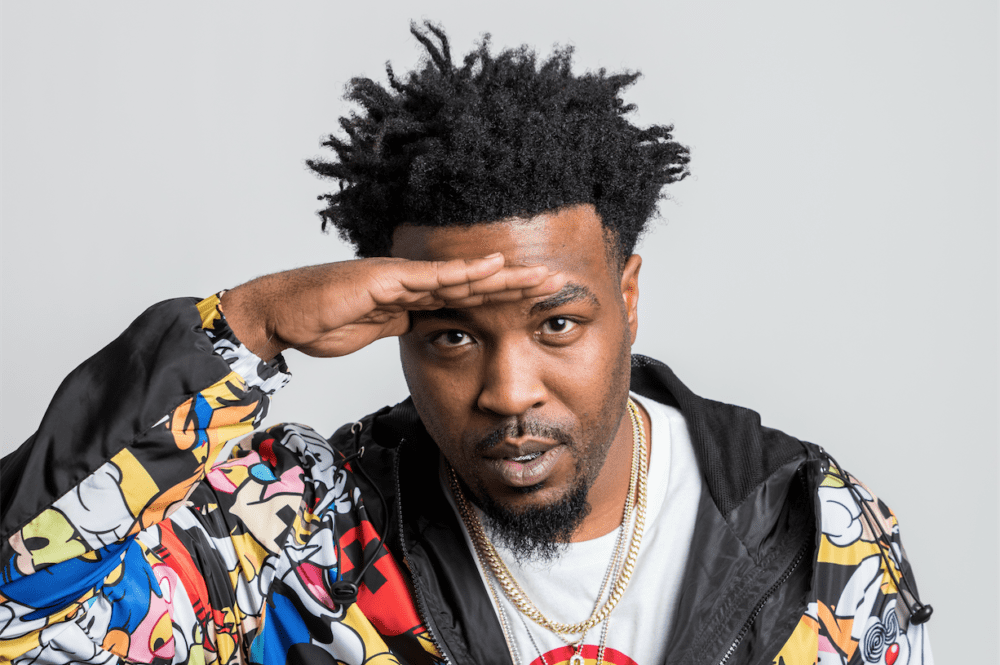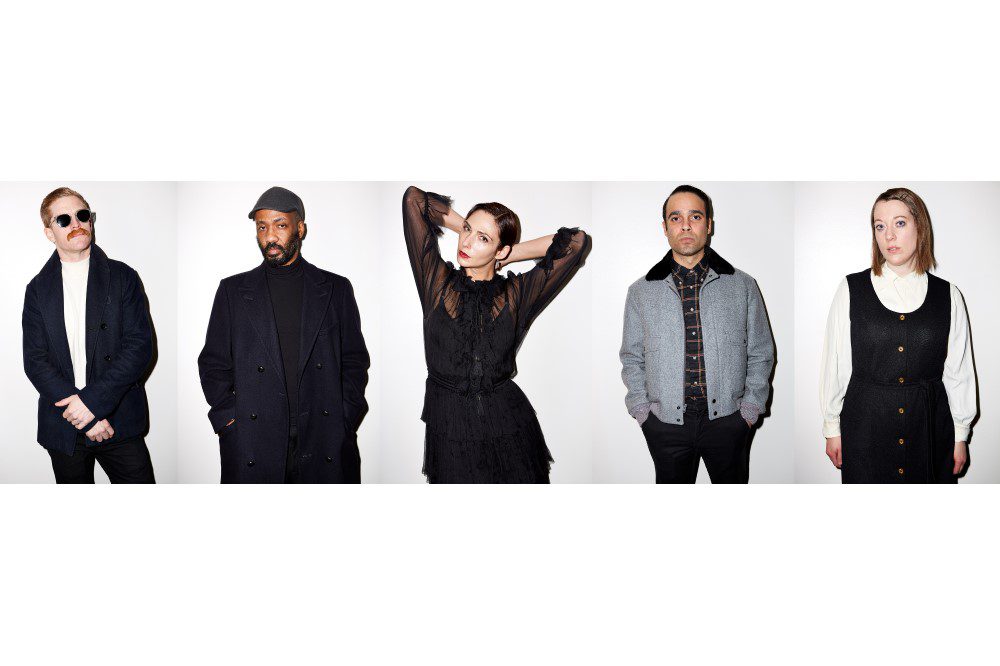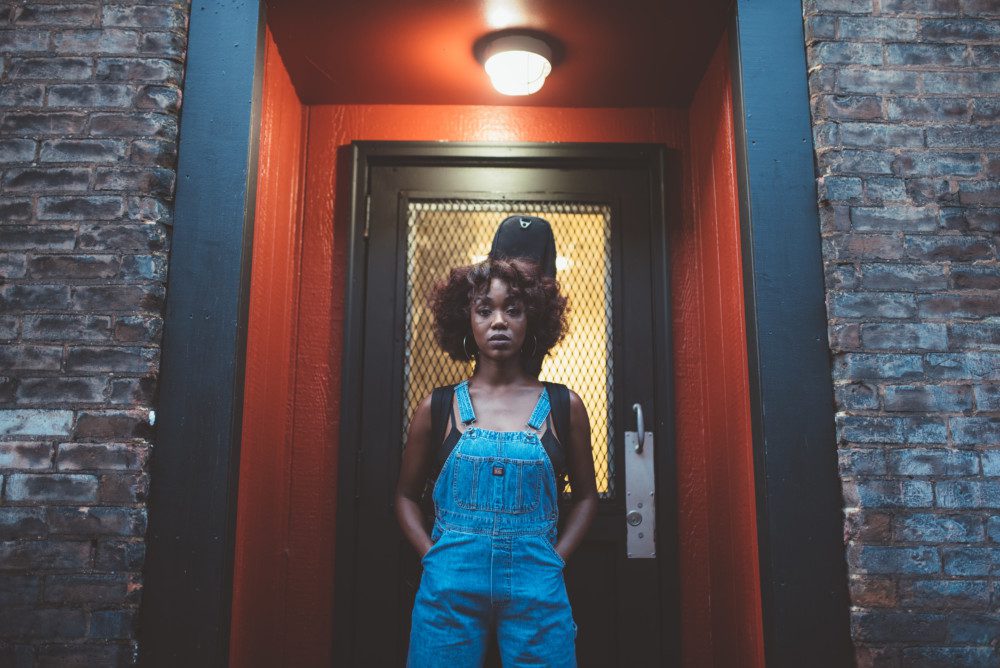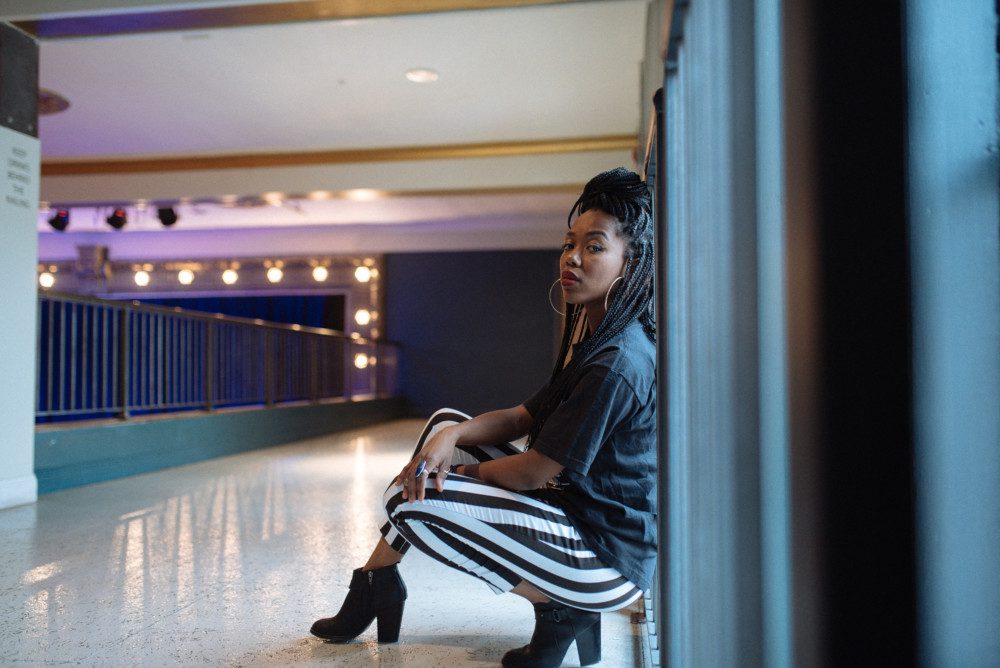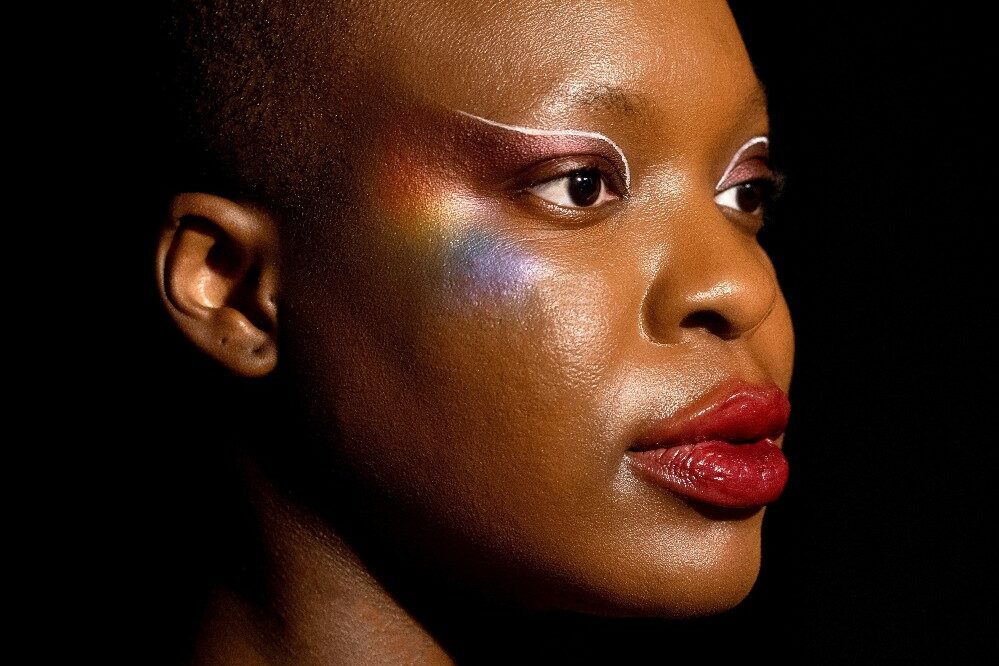
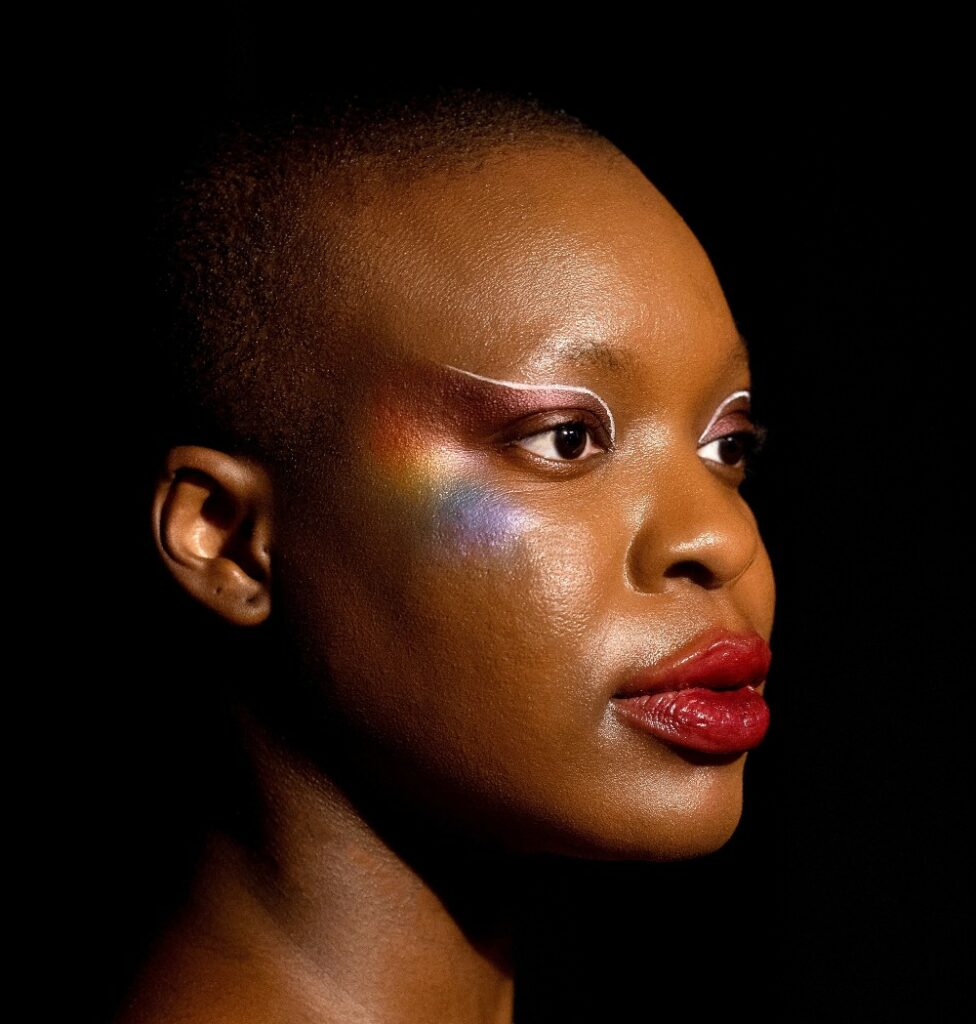
Is My Mind a Machine Gun? This is the question vocalist, songwriter and producer Kesiena “Kesswa” Wanogho asks on her latest collaboration with interdisciplinary artist and musician Zach Saginaw, a.k.a Shigeto. The audio/visual experience exemplifies two artists in their rawest, most honest forms, willing to experiment. Released exclusively on January 1st via The Museum of Contemporary Art Detroit’s (MOCAD) brand new media platform, Daily Rush, the film gives the viewer a look inside the minds of the artists and finds chaos, introspection and growth.
Mantra is at the center of Kesswa’s work. Highlighted by her 2019 EP, Soften, Kesswa has an inherent ability for distilling the most complicated of dreams, desires and anxieties into only a few simple words. Is My Mind a Machine Gun? starts with her chanting, “Oh my love, tell me now if you want me.” Slowly, she builds an entire world around those words, layering her voice to present a sense of urgency. It’s not immediately clear who “my love” is, which leaves space for the listener to reflect and insert themselves. Maybe it’s the voice of an artistic self left behind, coming now to reclaim its vessel. Maybe it’s our own voice, calling out in uncertainty to a love we’re afraid to lose.
Whomever Kesswa is speaking to, she responds to her own question with calming reassurance – There’s no doubt about it – all while flashing lights, street view vignettes, and Kesswa’s body language suggest forward motion. The visual echoes Kesswa’s centering message: as long as you are true to yourself, you are on the right path.
The ephemeral visual is accentuated with soothing waves of harp played by Ahya Simone; its sedative sounds contrast with the disorienting flashes of light, replicating the feelings of dissociation and anxiety that can accompany a dream. Slowly, the harp fades and is replaced by deliberate percussion. This sonic change seems to signal clarity and determination, as Kesswa transitions from repetitive chants to a string of crystal clear affirmations: “I’ve got a creeping intuition/I’m on a mission, clearly/It’s in my heartbeat and my eyes gleam/The stillness inside of me/I’m impulsive but I’m brave/Insisting on myself/I’m determined but I’m earnest/I am kind, I am worthy/Inherently.”
I caught up with Kesswa to find out more about the creative process behind this project.
IS MY MIND A MACHINE GUN?
— MOCAD (@MOCAD) January 1, 2021
KESSWA & @__SHIGETO
now playing at https://t.co/ykETvnvs6m pic.twitter.com/5S9uqMDcuA
AF: Can you tell me a bit about the writing/recording process? What’s the flow of collaboration between you and Shigeto?
KW: The process with Zach and I has been really experimental and grounding. In the beginning of our collaboration, I was thinking a lot about finding my voice, which I think comes out in the composition of the track. A lot of our collaboration has been us just going with the flow of our lives and bringing our influences and emotional needs to the work. Sometimes, we jam. Sometimes we create structures to work within.
AF: How did this piece in particular come to be? Is there a story behind the music and lyrics? The title?
KW: This piece has been evolving and still kind of is. The version in the video was made specifically for this particular commission. When we were working on the track, Zach felt it would be really awesome to incorporate a narrative, and I’m always writing. The title is an excerpt from Assata Shakur’s “What is left?” poem. This line really stood out to me, because I often feel like thoughts are things we can weaponize against ourselves without close attention. As a person who exists at the center of many intersections of identity, I find myself internalizing and reacting to the projections of the outside world on my body, my creative potential and my values. If my mind is in fact a machine gun, I want to point it towards the projections.
AF: The visual feels just as important to the story as the music does in this piece – did you have a visual in mind when writing the music? Which came first?
KW: The process of creating the visual component of the work was as free flowing as the soundscape. Zach was the director and camera operator, and Vinnie and Robert did assemblage and animation. Zach and I knew that we wanted to give some insight into the world we’ve been building. We wanted to create a visual language, and things kind of unfolded organically.
AF: Do the two of you have more projects like this one up your sleeve/in process?
KW: It’s a surprise! But things are in process.
AF: I know a lot of your music focuses on mantra – is there a certain mantra you repeat everyday, or one you’re feeling specifically lately?
KW: Great question! I’ve been sitting with the fact that my body is finite and paying attention to what feels draining and what feels invigorating. Using that awareness to free up some extra energy and let stale things [and] conversations go. Times are too heavy to be stressed about things within my control!
Follow Kesswa on Instagram for ongoing updates.

